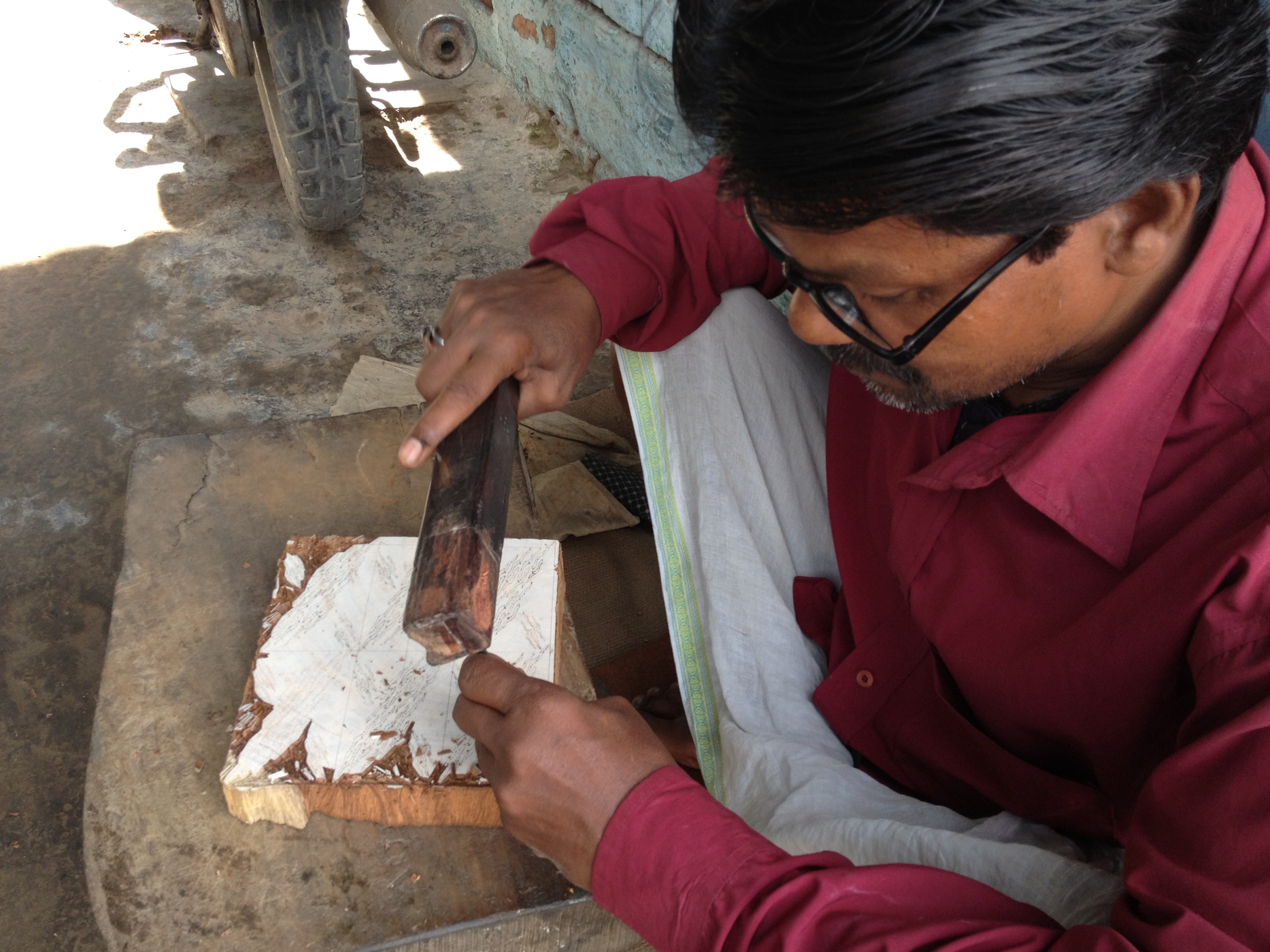The accompanying gallery of works on paper were made while I was in Varanasi during April. (click on any image to view full size) A significant part of my Fulbright research focused on textiles. During my time in India, I traveled to the city of Jaipur in state of Rajasthan. I visited the Ahnoki Museum of Block Printing and the city of Jaipur and became instantly captivated the tradition and history of block printing on textiles. In addition to seeing an abundance of textiles in the city of Jaipur, I also visited the village of Sanganer. The village of Sanganer is located about 10 miles south of the city of Jaipur. It was amazing. I walked into textile factories, watched the screen printing process, fabric dying, blue pottery production and toured a handmade paper factory, and I left with a lot of paper, the paper I used to make the prints in the accompanying image gallery. I felt an immediate connection to all these processes, finding similarities in the technical and creative processes of ceramic material.
When I returned to my host city, Varanasi, I found a block carver, Subbash and his apprentice, Jogdish, neither spoke a word of English, except for the names of some Americans he met in the past, telling me their names in the hopes that I would know them. But we didn't need to speak, it was all visual. I showed him my designs and would gently nod his head side to side with a slight smile in the side indicating all was good.
I would leave my designs with him and a small rupee deposit. He would tell me how many days it would take in Hindi, I could understand numbers......he gave me his mobile number, I gave him mine. He would call me a few days later, first stay his name, followed by some Hindi and by the one word I needed to hear, 'FINISHED, I would then say in Hindi, 'Accah, thik hai, (Hindi for 'good, fine'). I would then get on my bike and ride to his shop and he would produce the carved blocks. It was a wonderful experience. Subbash and Jogdish were able to echo and transform my 2-dimensional ink drawings into 3-dimensional facsimiles of my drawings. They didn't change anything about my drawings and never asked me to change anything. Their focus was to replicate the design given to them.
They were always busy working, even Subbash's father would come in and smooth the surfaces of tree trunk slabs in preparation for carving, he was 80 years old. Each time I arrived, they would send for chai, that is what we would do first, sit and drink our chai and try to 'converse' as best we could.....I would take pictures with my camera and they would take pictures with their mobile phones and we would laugh and then Subbash would show me the blocks and I would delight in their work. I loved being in his shop. It was minimal, the paint was old and peeling but the space was organized with tree slabs of wood arranged in their various stages of preparation for carving in the studio with a really really old stereo that would fill the space with beautiful Indian music.
Oftentimes I would just sit and watch them work after already collecting my blocks. They were always busy working on carving designs from various textile companies that would be shipped off to Mumbai, Delhi and cities in South India. In this little shop in Khojwah, Varanasi is where I found my block carvers, Subbash and Jogdish.





































